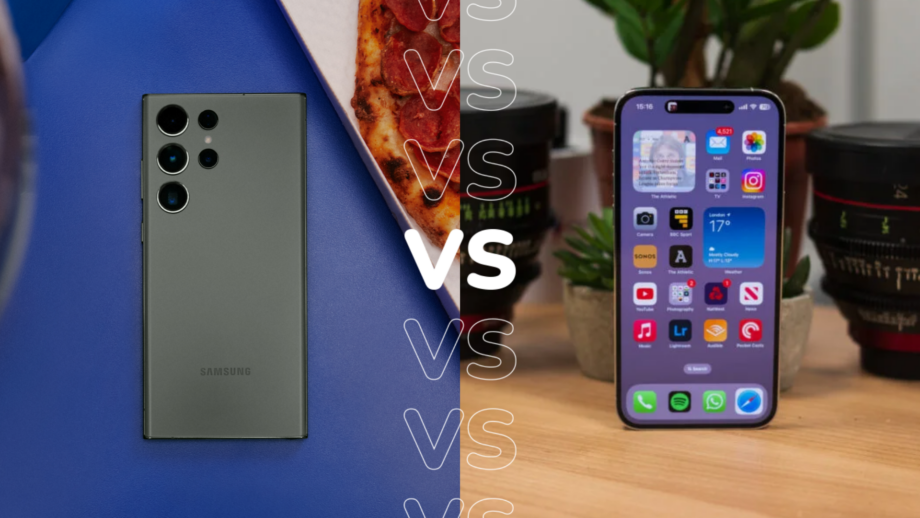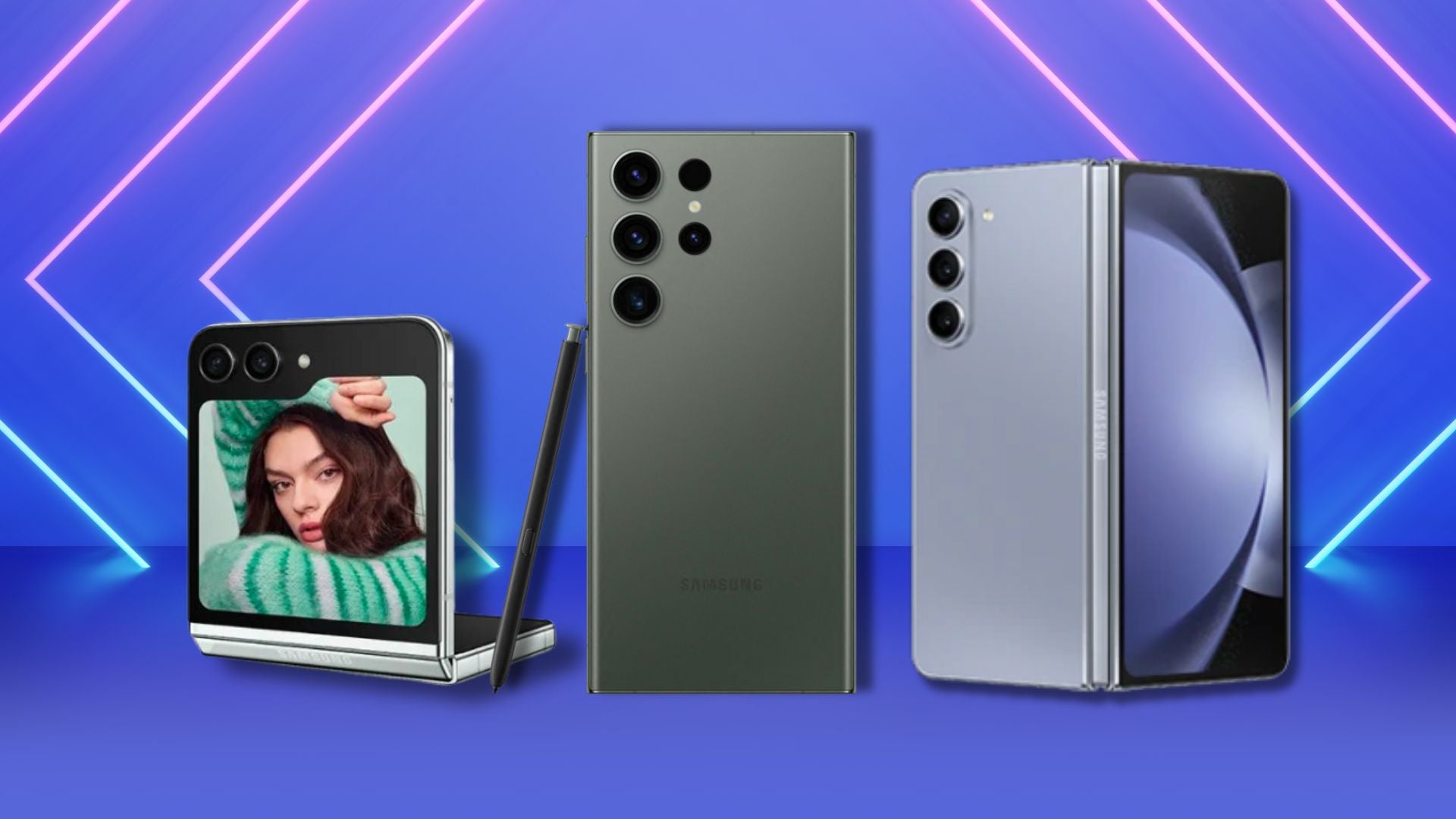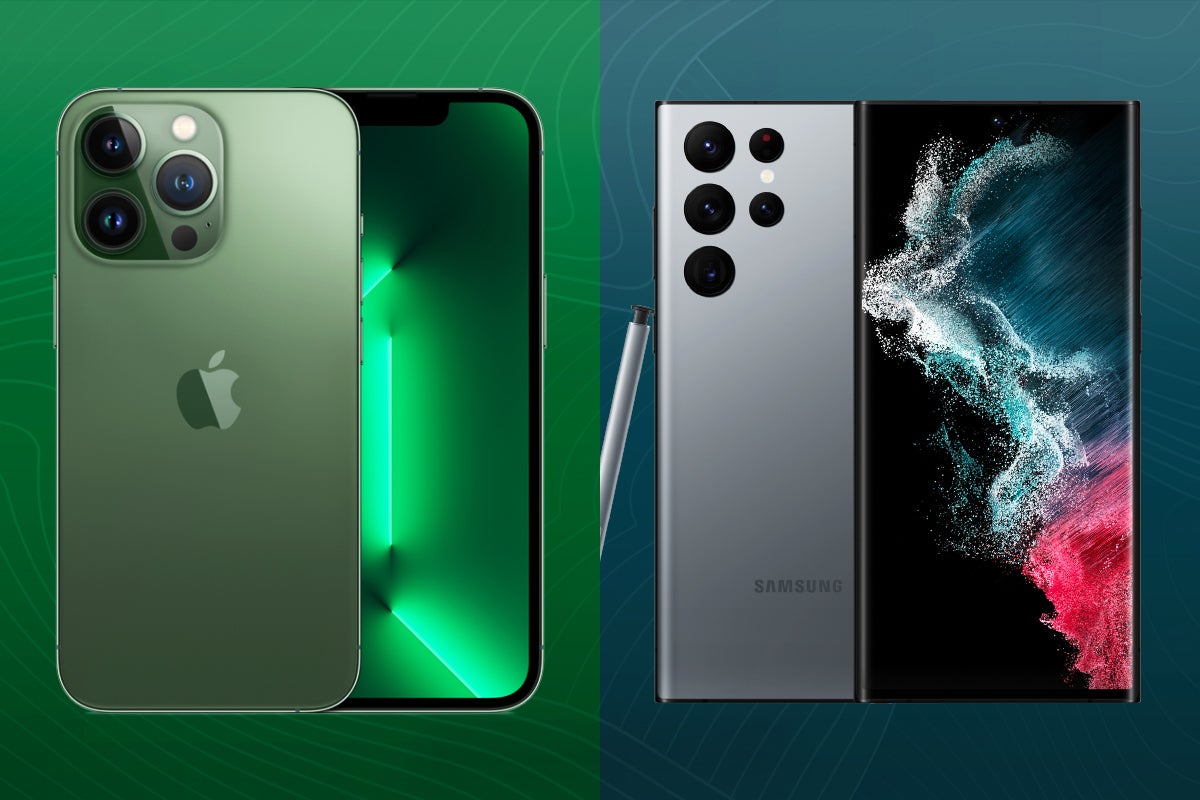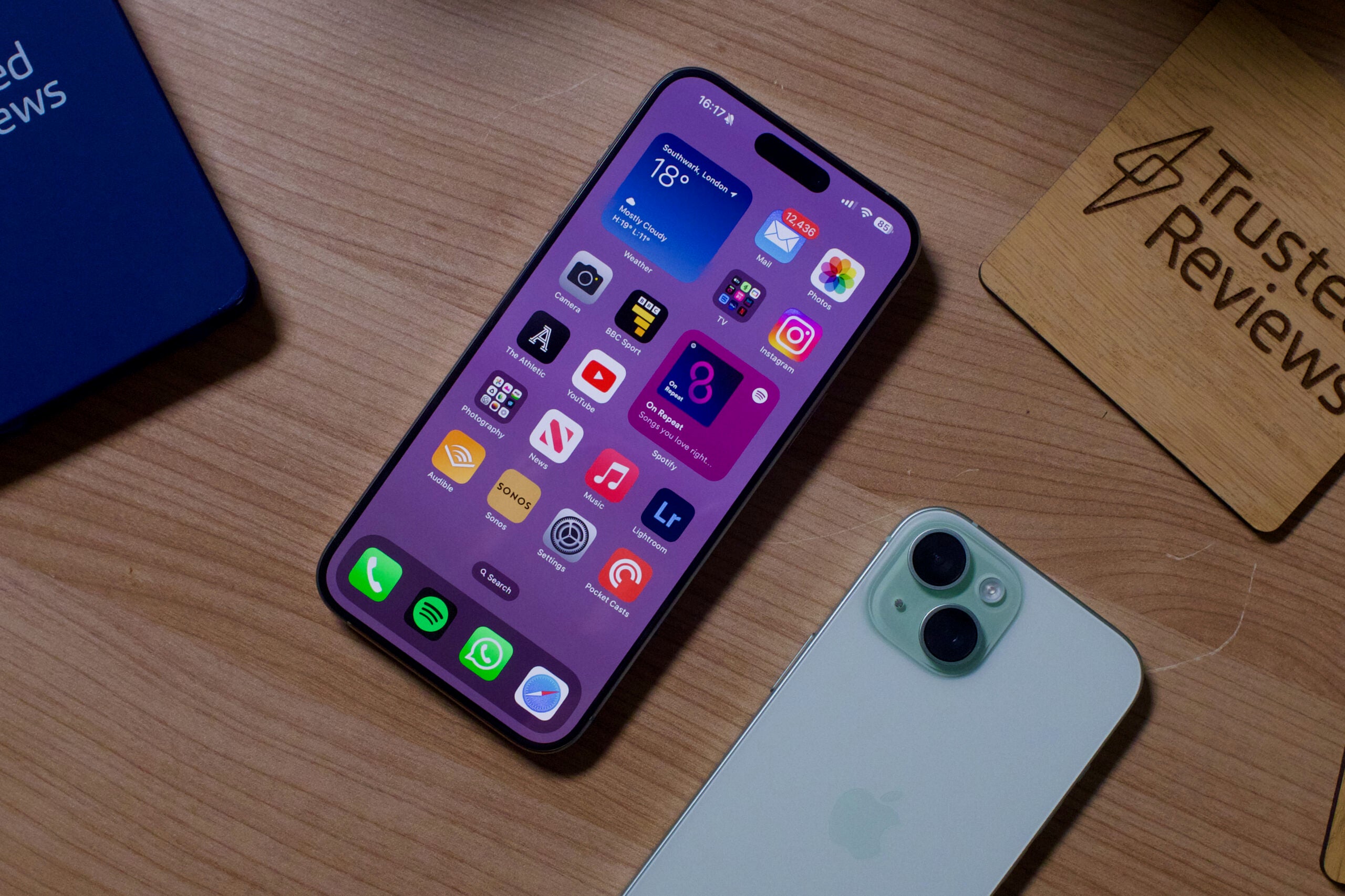Samsung Galaxy S23 Ultra vs iPhone 14 Pro Max: What’s the difference?

If you’re looking for a new premium phone, you may have considered the iPhone 14 Pro Max. Now, Samsung has announced its latest high-end S series phone, the Galaxy S23 Ultra.
You probably already know that these phones have different operating systems – after all, one is an Android device and the other runs Apple’s own iOS. However, there are actually quite a few differences between these two flagship models when it comes to their specs and features.
Keep reading to find out how the Samsung Galaxy S23 Ultra and the iPhone 14 Pro Max compare when it comes to their chipsets, screens, cameras and more.
They’re powered by different custom chips
The iPhone 14 Pro Max and the Samsung Galaxy S23 Ultra are both powered by custom chipsets – the iPhone by Apple’s A16 Bionic and the Samsung by the new Snapdragon 8 Gen 2 for Galaxy.
This is a special version of Qualcomm’s flagship chipset, expected to improve gaming performance with a higher-clocked CPU and an upgraded Adreno GPU to improve performance and power efficiency on the 8 Gen 2.
Samsung has also ditched its Exynos chip for 2023, opting to power every region’s model with the same processor.
The iPhone 14 Pro Max has already impressed us with its fantastic performance and we found the phone was also a brilliant choice for mobile gaming. We’ll have to wait and see how the Galaxy S23 Ultra compares in this arena.
The iPhone 14 Pro Max has the Dynamic Island
Perhaps the most unique feature to come of the iPhone 14 announcement last year was the Dynamic Island gracing the screens of the Pro and Pro Max models.
The Dynamic Island transformed the iPhone notch into an interactive display feature, allowing users to view alerts, notifications and activities at a glance on the animated notch.
We thought the Dynamic Island was a great way to make use of the notch while still hiding the front camera and Face ID sensor.
The Galaxy S23 Ultra has a new 200MP camera
The most exciting new feature on the Galaxy S23 Ultra is definitely the new 200-megapixel camera.
The Galaxy S23 Ultra packs a quad camera consisting of a 200-megapixel wide sensor, a 12-megapixel ultra-wide sensor with a 120-degree FOV and two 10-megapixel telephoto sensors with 3x optical zoom and 10x optical zoom respectively.
The 200-megapixel Adaptive Pixel sensor uses a method called pixel binning to support this high-resolution processing, while the camera also supports 8K video at 30fps.
The iPhone 14 Pro Max also features a quad camera with pixel binning, but carries a 48-megapixel main sensor, a 12-megapixel ultra-wide sensor, a 12-megapixel 2x telephoto sensor and a 12-megapixel 3x telephoto sensor. The iPhone supports 4K video capture at 60fps or ProRes at 4K/30fps.
We found the iPhone 14 Pro Max offered excellent performance and was particularly impressive in low-light situations, though the Galaxy S22 Ultra outperformed it when it came to the telephoto camera. We’ll have to see if the Galaxy S23 Ultra has the same (or even better) skills in this regard.
The Galaxy S23 Ultra has a bigger battery
Not only does the Galaxy S23 Ultra contain the same size battery as the Galaxy S22 Ultra (5000mAh), which has a bigger camera without increasing its size, but it also has a bigger battery than the one found in the iPhone 14 Pro Max (4323mAh capacity).
When it comes to real-world use, we found the iPhone 14 Pro Max had an all-day battery life that could even last two days with lighter use. We found the 5000mAh battery in the Galaxy S22 Ultra to be okay, but it didn’t last as long as we’d have liked and required charging on a nightly basis.
We’ll have to wait and see if the Galaxy S23 Ultra is any more efficient than its predecessor when it comes to its battery life.





